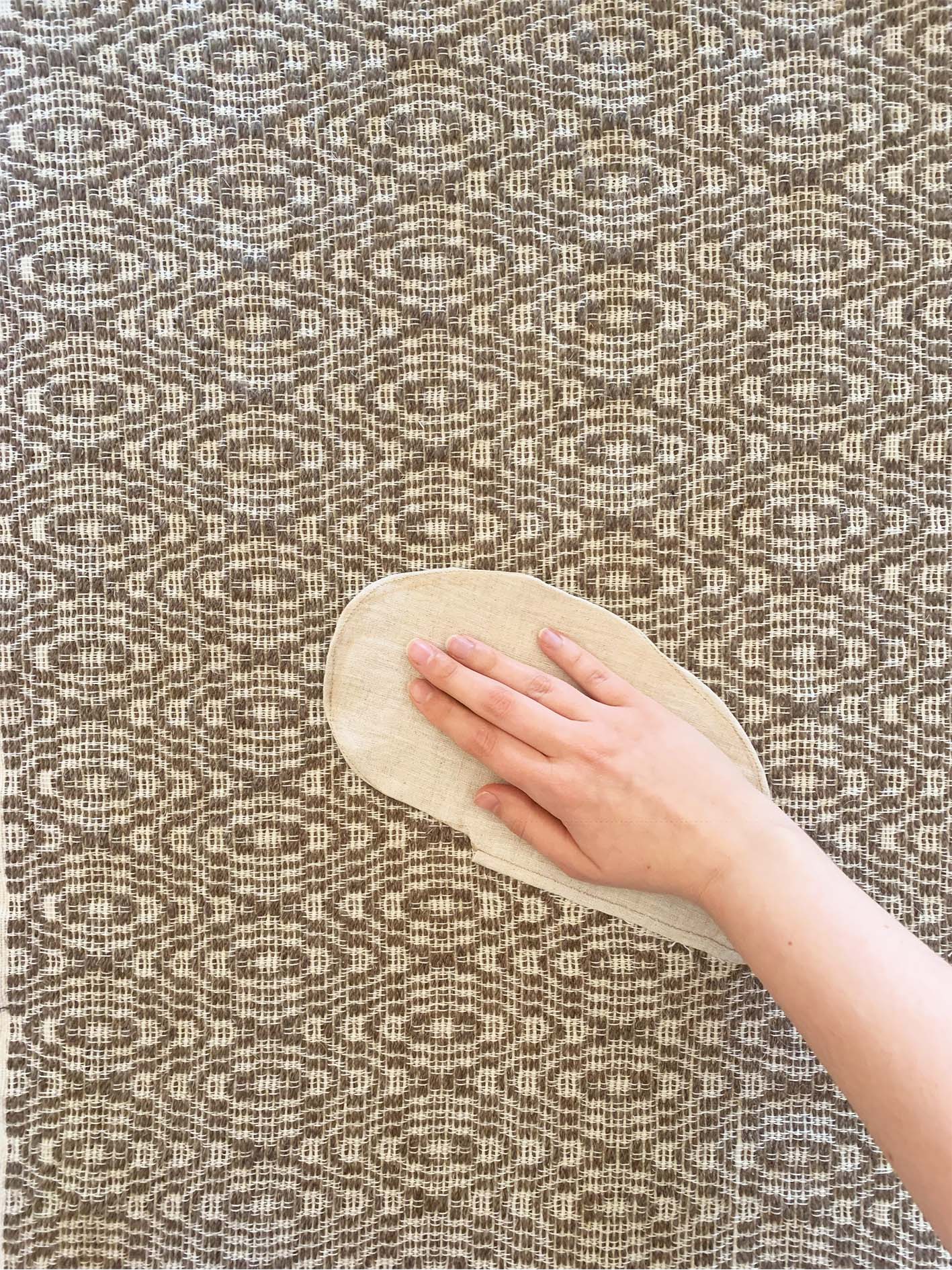840 x 690 mm, 135 x 100 mm, 135 x 100 mm; cotton, wool, linen, photographic print on paper.
The structure of the fabric and the infinity of the grid correspond to each other. The fabric, wich arises from the sequential crossing of fibers, has the same nature as the grid, a support that participates in the act of founding the real, determining it. The practice of weaving, similar to submitting the object of study to a grid, contains the idea of perpetual, rhythmic movement, and bears a structuring propensity.
Once the agreement between mediums was recognized, the task of crossing them was carried out. For this, photocopies of photographs of the house model, previously cut into thin strips, were used to create woven images.
The handling of the deconstructed imagem and its subjection to a cadential metric allowed the appearance of new house configurations. Represented through the model photographed on the site of its future construction, the house presents an inverse proportional relationship with it. The inherent smallness of the model made the process of thinking about the form devoid of its utilitarian character easier. Through the tampering of photocopies, the house was treated as a shadow, an optical device and an integral part of the landscape.
When thinking about the notions of landscape and territory, focusing on the content that presents itself around the model of the house, the suggestion of looking at the territory as a fabric becomes more evident. The fabric structure is analogous to the territory, the pattern is analogous to the landscape. To the continuous patterned fabric, a pocket with reduced perceptibility, when empty, is added. The latest is made visible on the back of the cloth or when it is occupied, as it forms a lump that distorts the pattern.
Thus, through a series of operations, the model transitions into a crack that distorts the ladscape and, finally, into a pocket. In the landscape that the fabric represents, the slit appears as a pocket, wich molds itself around the hand.


